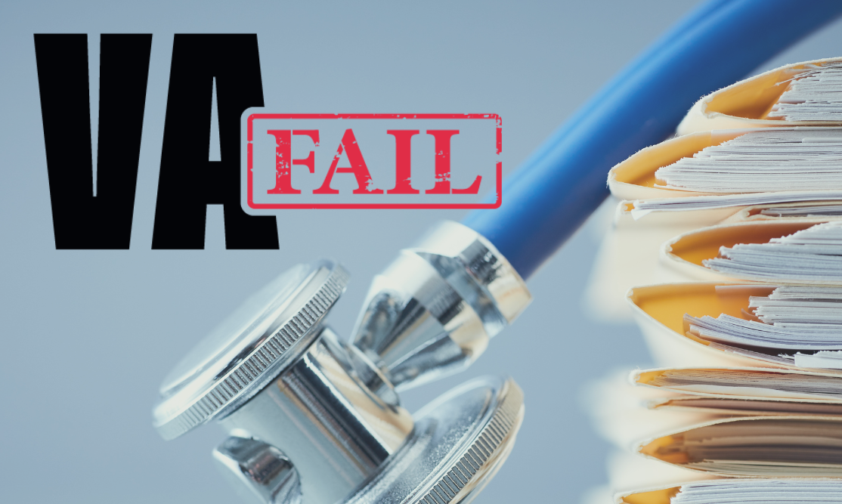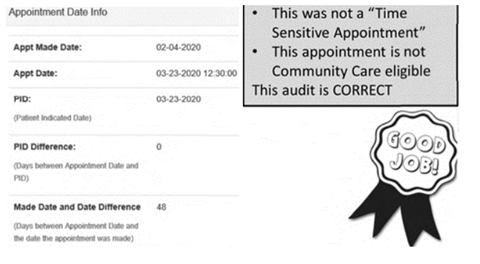
#VAFail: The VA is actively withholding documents that could reveal more wait-time manipulation
Since 2021, Americans for Prosperity Foundation has been fighting to force the Department of Veterans Affairs to comply with a series of Freedom of Information Act (FOIA) requests that seek information about wait times for veterans seeking medical appointments from VA facilities.
So far, AFPF has been met with barrier after barrier stood up by the VA.
After filing the FOIA requests and receiving some initial productions of records from the VA, the agency went radio silent. AFPF ultimately filed a lawsuit, and the VA was ordered to start producing the requested documents. But the agency has been slow walking the release of records, instead disclosing hundreds of pages of duplicates. The most important records that have yet to be disclosed include email messages between agency leadership, as well as communications with the White House and Congress.
It makes sense why the VA has been hesitant to provide documents about wait times and changes to administration of the community care program. What we’ve seen so far has been shocking, though not surprising.
VA is using incorrect wait-time calculations for community care ― if they are offering community care at all
The VA MISSION Act required the VA to update its eligibility criteria for veterans to allow more veterans to access community care. The VA complied but has attempted to undermine veterans’ access to community care choices ever since. To circumvent veterans choosing community providers over VHA-provided care, the VA found ways to manipulate wait times to appear shorter, trapping veterans in the VA system. To get closer to the actual date of an available appointment, VA schedulers measured wait times by a misleading figure called the “patient indicated date” rather than the time between the date the veteran asked for an appointment and when they received one. More on that later.
The VA also plays games with canceling and rescheduling appointments, often without veterans’ consent, to “reset” the wait time clock and keep appointment waits artificially low.
Further, the first set of FOIA documents revealed a concerted effort by the VA to mislead veterans about community care options.
Guidance documents from the VA incorrectly put the burden of asking for community care on the veteran rather than the VA, even though the VA MISSION Act explicitly places that responsibility to inform veterans of their options on the VA itself.
Sample scripts for VA schedulers similarly instruct them to place this burden on the veteran and to attempt to dissuade veterans from using the Veterans Community Care Program altogether.
Extra layers of unnecessary review
A second wave of FOIA documents revealed wait-time manipulation was even worse than initially feared.
VA training documents call for extra layers of administrative review before a veteran can be deemed eligible for community care. That review is not required by the VA MISSION Act. The VA uses it to erect one more barrier to community care. Documents also included incorrect wait-time calculations that did not follow the VA’s own community care access standards and made waits appear shorter than they really are for veterans.
An audit example from the FOIA documents shows an appointment with a 48-day wait time, but because the VA is using a manipulative method for calculation, a “patient indicated date,” the appointment appears in the system as having a 0-day wait time.
The veteran in question was eligible for community care ― but the VA’s deceptive scheduling practices would’ve kept him trapped in the VA system.
What else is the VA hiding?
The VA still owes AFPF more records. Yet for months, the VA has only released hundreds of pages of duplicate documents, rather than the new material, such as email, it is required to provide. These documents fail to address the heart of the problem: Where are the wait-time manipulation policies coming from, and who among VA leadership is signing off on them?
These are the answers advocates and lawmakers need as the VA provides the next round of FOIA documents, which should be in the coming weeks.
The information uncovered from this FOIA request and lawsuit is vitally important. If veterans can’t get the care they need when they need it, their health and their lives could be in jeopardy.
The VA is skirting the law and its own regulations by not allowing veterans to seek community care. VA bureaucratic priorities should never come before the good of the veterans it serves, and the department needs to be held accountable when it fails in its mission to care for veterans.
That is why we at CVA highlight every #VAFail we come across, to ensure lawmakers and Americans know what veterans are experiencing so we can fix the problems and ensure veterans get the care they deserve.
Read more about our solutions for better veterans’ health care.





